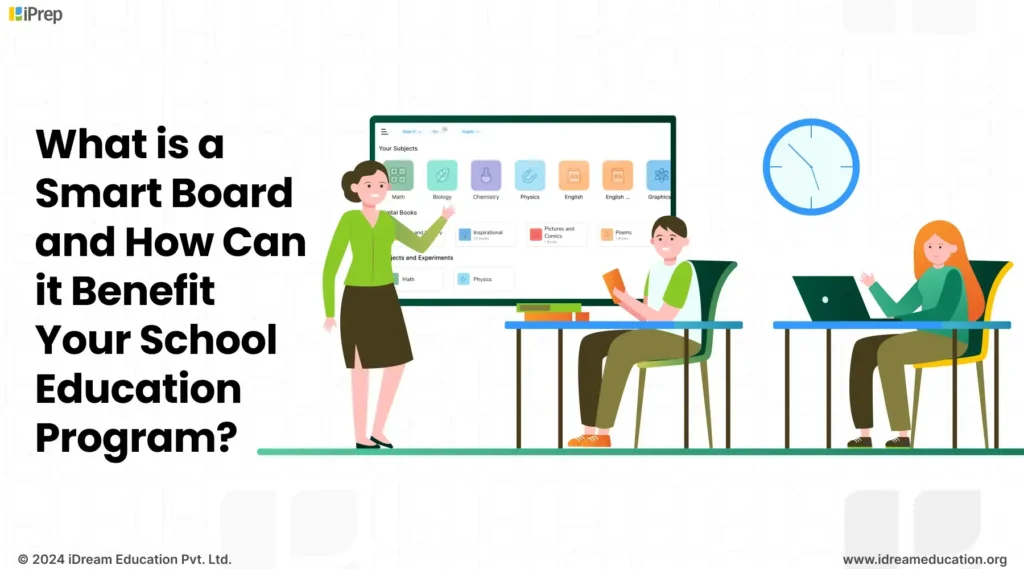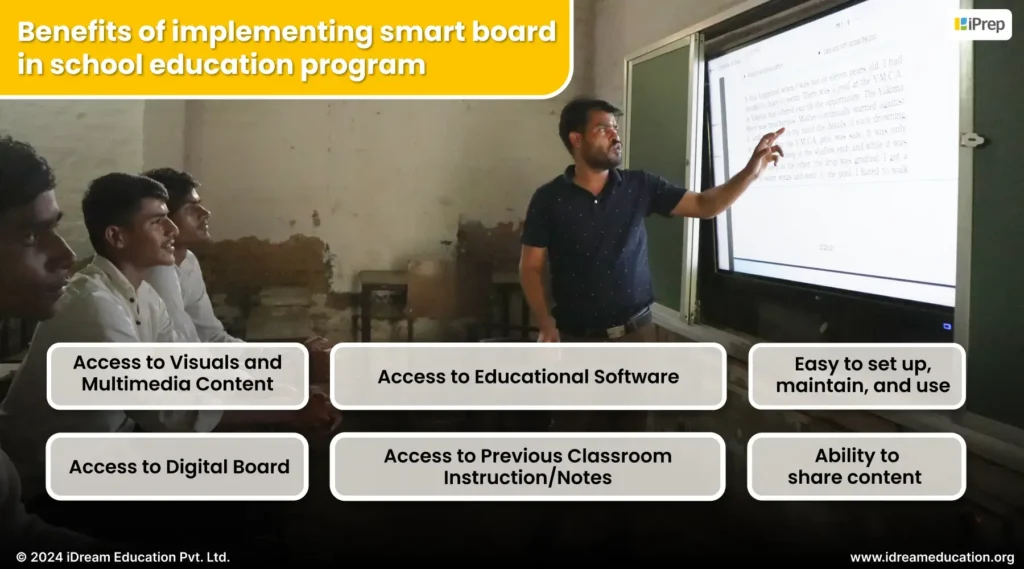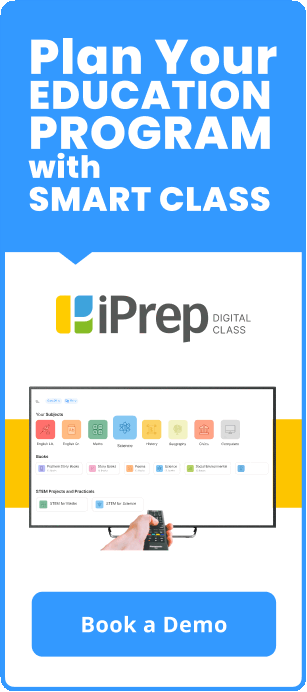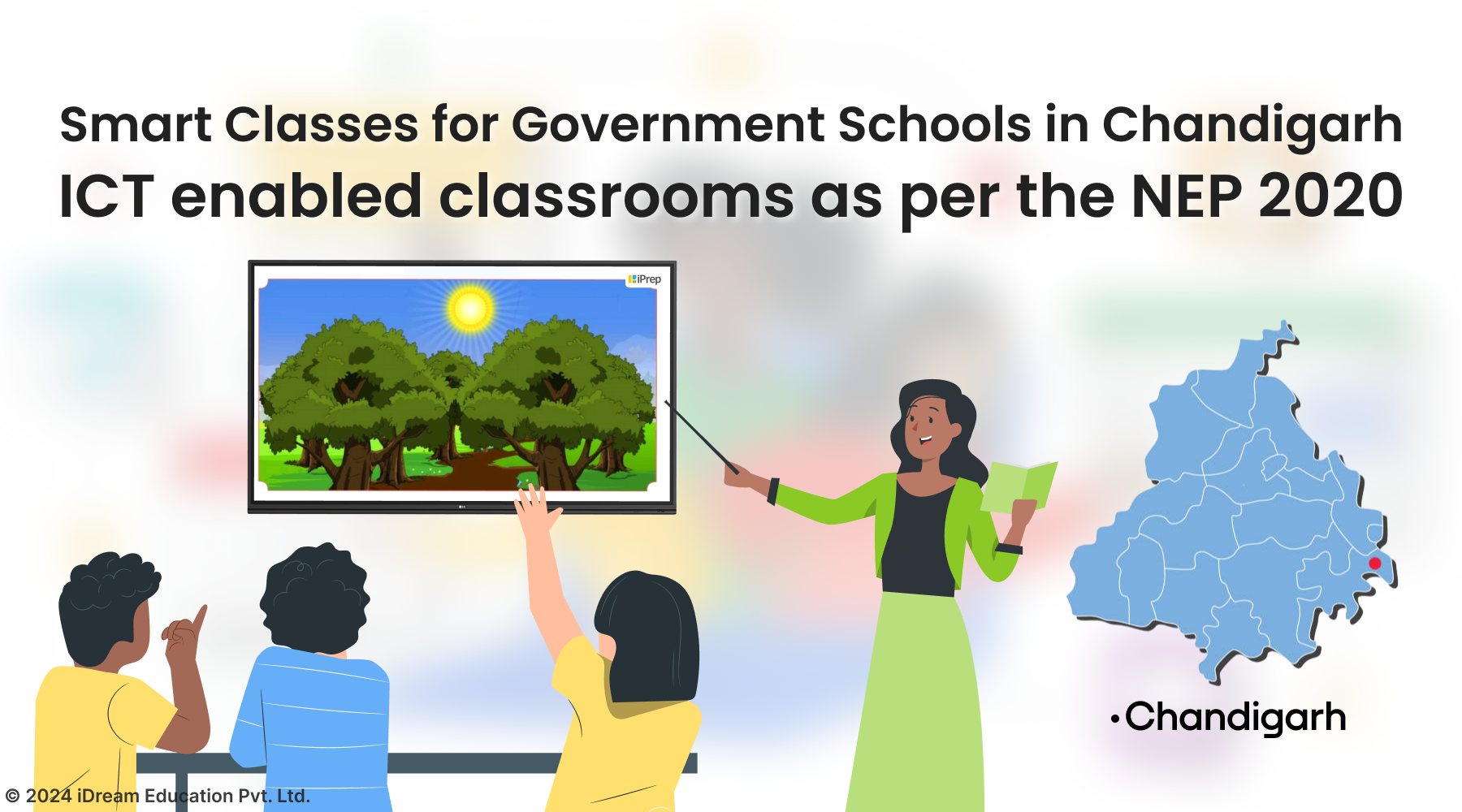What is a Smart Board and How Can it Benefit Your School Education Program?
Discover how integrating a Smart Board into your school education program can enhance classroom learning, enhance student engagement, and streamline the teaching approach with its interactive features.

For decades, projector-based boards served as the base of digital education in schools, symbolizing the early stages of technology integration in classrooms. However, these systems were often challenged with complexities that hindered their widespread adoption, particularly in government schools with limited infrastructure and resources. The complex setup, frequent maintenance, need for continuous internet, and specialized technical knowledge to access posed significant concerns for teachers.
As technology continued to advance, the need for a more intuitive, user-friendly, and interactive solution became increasingly evident.
This marked the introduction of smart TVs, smart boards commonly known as interactive whiteboards. These smart class hardware are enhancing and making digital education possible in the remotest corner of India.
Let’s Get Deep: What is Smart Board and how can it benefit your School Education Program
Smart boards are large touchscreen displays that combine the simplicity of a whiteboard with the power of a computer, offering an intuitive and engaging platform for teaching and learning.
- Through simple touches or mouse clicks, it enables multiple interactions, fostering collaboration and manipulating content on board to make explanations practical and comprehendible
- Teachers can write, draw, annotate, and even connect their devices to share information directly on the board.
- Smart Board not only makes classroom teaching engaging but also promotes brainstorming, presentation, and active participation, making learning more immersive and collaborative.
A classroom example demonstrating the usefulness of smart boards in schools
In a science class, a teacher can use a smart board to display a solar system, allowing students to zoom in and explore each planet. Students can then use their fingers or label the planets, add notes, or even draw their observations. This way smart boards make classrooms a collaborative workspace where every student can contribute and learn together. This makes learning more engaging and memorable.
Benefits of implementing smart board in school education program

Benefit 1: Easy to set up, maintain, and use
While infrastructure and resource limitations within the government pose challenges for widespread digital learning implementation, smart boards offer a practical and accessible solution. Their ease of setup, maintenance, and use, coupled with their compatibility with existing classroom infrastructure, make them an ideal fit for diverse educational environments. Moreover, their low maintenance requirements and user-friendly interface facilitate the seamless adoption of smart class technology by teachers.
Benefit 2: Access to Visuals and Multimedia Content
Traditional teaching methods relying solely on boards and textbooks often lead to boredom and disengagement, especially when complex concepts are not tailored to students’ diverse learning abilities. This “one-size-fits-all” approach fails to accommodate individual needs, leaving some students struggling to grasp the material. However, the integration of smart boards in classrooms changes static lessons into dynamic experiences by allowing teachers to highlight key concepts, address student questions in real-time, and delve deeper into complex topics. The fusion of visual aids with personalized instruction creates a highly engaging and effective learning environment. This benefits students from both multimedia resources and the expertise of their teacher.
Benefit 3: Access to Digital Board
The introduction of smart classrooms, while offering a plethora of teaching resources, has raised concerns among teachers regarding the increased workload of managing these additional teaching tools. However, the ability to switch to a smart board for presenting interactive content and a digital board for conventional instruction has effectively addressed this concern. It is an in-built annotation tool to simplify teaching and make explanations interactive. A digital board is a familiar blackboard-like surface for drawing, writing, and explaining concepts just as they would on a chalkboard. However, the digital board goes beyond the limitations of chalk and erasers, offering a vast array of additional features. Teachers can effortlessly incorporate shapes, mind maps, labels, and multimedia elements into their lessons, saving valuable time and making complex concepts more engaging and comprehensible for students.
Benefit 4: Access to Educational Software
While traditional auditory learning remains effective, the digital age presents a wealth of diverse resources catering to individual learning styles. However, teachers often grapple with time constraints and rigid lesson plans, hindering their ability to fully leverage these resources for optimal student engagement. In this case, the smart board becomes a versatile hub of Android applications. This functionality, complemented by pre-installed educational software such as iPrep further enhances this experience, providing teachers with a centralized hub for curriculum-aligned content, exactly similar to textbooks. This streamlines lesson preparation, saving valuable time and enabling teachers to focus on delivering engaging lessons.
Benefit 5: Access to Previous Classroom Instruction/Notes
Revision is crucial for bridging learning gaps, but traditional methods like chalkboard recaps are time-consuming and impractical. Smart boards are enhancing this process by enabling teachers to digitally save and store lesson content directly from the board. This eliminates the limitations of blackboards, allowing for easy access to past lessons for revision and reference. Teachers can seamlessly switch between saved pages, facilitating quick and efficient revision before classes or when starting new chapters. This innovative feature not only benefits current students by reinforcing learning but also serves as a valuable resource for future grades. With smart boards, teachers can effortlessly ensure regular revision, minimizing learning gaps and ensuring that no student falls behind due to missed information.
Benefit 6: Ability to share content
Classroom teaching and instructions set the foundation for student understanding, whether learning at home or revising for exams. However, accurately recalling or jotting down blackboard content is often challenging, leading to information gaps, especially for absent students. Smart Boards address these issues by enabling seamless content sharing. Teachers can easily share digital board files with students’ devices via QR codes, ensuring access to precise classroom instruction for effective learning and revision. This eliminates the risk of students missing crucial teaching, fostering a more inclusive and comprehensive learning experience.
The integration of smart boards in school education programs is a solution to the concerns of many teachers and students.
By fostering an interactive and dynamic learning environment, smart boards empower teachers to deliver engaging lessons, cater to diverse learning styles, and encourage student collaboration. As technology continues to evolve, implementing smart boards as an indispensable tool will undoubtedly pave the way for a more effective, interactive, and productive educational landscape.
We’re excited about the opportunity to enhance your school’s educational program with smart boards, empowering teachers with 21st-century skills. To learn more about smart boards and iPrep, please contact us at +91 9501110665 or write to us share@idreameducation.org
Frequently Asked Questions -
1. What is a Smart Board?
A Smart Board, also known as an interactive whiteboard, is a large, touch-sensitive display that connects to a computer and projector. It allows users to interact with digital content using their fingers or a stylus, essentially turning a traditional whiteboard into a dynamic digital interface.
2. What is the use of a Smart Board?
Smart Boards have diverse uses across education, business, and other fields. In education, they enable interactive lessons, presentations, and collaborative activities. Teachers can display multimedia content, annotate images or text, and engage students with quizzes or games. In business settings, Smart Boards facilitate dynamic presentations, brainstorming sessions, and data visualization.
3. What are the advantages of Smart Boards in Education?
Smart Boards offer numerous advantages in education. They enhance student engagement and participation through interactive content and activities. Visual learners benefit from the multimedia presentations, while kinesthetic learners thrive with the hands-on interaction. Smart Boards also promote collaboration and creativity, allowing students to work together on projects and brainstorm ideas. Additionally, they cater to diverse learning styles and abilities, making education more inclusive.
4. Is a Smart Board a cost-effective solution for education initiatives?
The cost-effectiveness of Smart Boards depends on various factors like the initial investment, ongoing maintenance costs, and the potential benefits they offer. While the upfront cost can be significant, the long-term benefits like improved student engagement, academic performance, and teacher productivity might outweigh the initial investment. Additionally, the versatility of Smart Boards across different subjects and grade levels can maximize their utilization, potentially making them a cost-effective solution in the long run.







